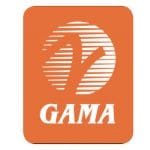FAA SAFO – Inspection of Lavatory Fire Extinguishing Bottles on Aircraft Parked or Stored for a Prolonged Period of Time in a High-Temperature Environment
Background: The Federal Aviation Administration (FAA) reviewed numerous Original Equipment Manufacturer’s (OEM) Aircraft Maintenance Manuals (AMM), specifically Chapter 10, Parking, Mooring, Storage and Return to Service sections. The review revealed inconsistencies with the need to perform an inspection of lavatory fire extinguishing bottles when an aircraft is returned to service following a prolonged storage period. Some AMMs contain procedures for inspecting the lavatory fire extinguishing bottles, while others do not.
Recommended Action: Operators should inspect lavatory fire extinguishing bottles on in-service aircraft that were parked or stored for a prolonged period in a high-temperature environment, if such inspection was not performed as part of the return-to service checks. Operators should also add this inspection to any future return-to-service aircraft. Operators should consider meeting with their appropriate Principal Maintenance Inspectors to discuss inspection procedures that include the lavatory fire extinguishing bottles.
Link to read the full SAFO
EASA Return to service of aircraft after storage: Guidelines in relation to the COVID-19 pandemic
Guidance updated 28-7-2021
Introduction of an inspection of lavatory fire extinguishing bottles on in-service aircraft that were parked or stored for a prolonged period in a high-temperature environment. Refer par. 3.3, Appendix 1, hazard 7 and Appendix 2, Best Practice 1.
NOTE: This inspection should be performed retro-actively if it was not part of the return-to-service inspection after parking/storage, if such inspection was not performed as part of the return-to service checks.




